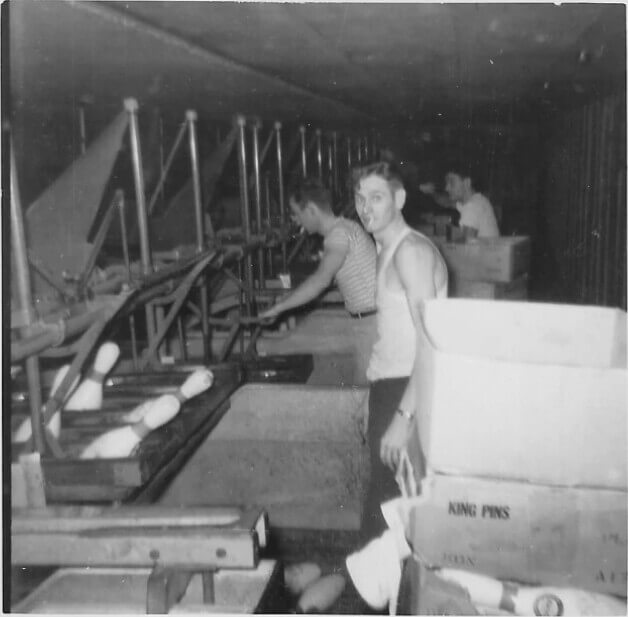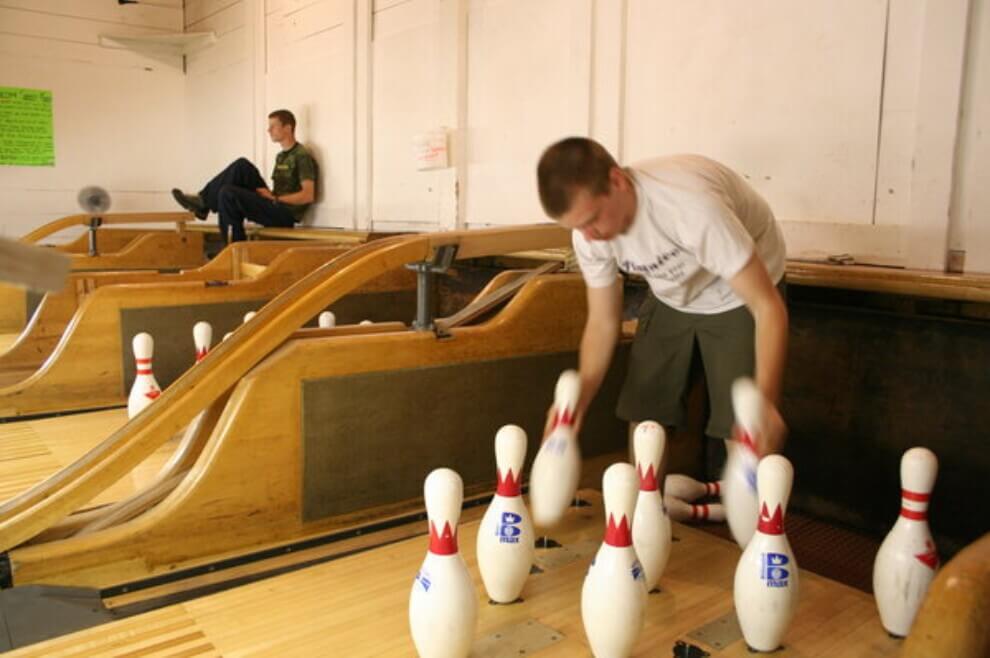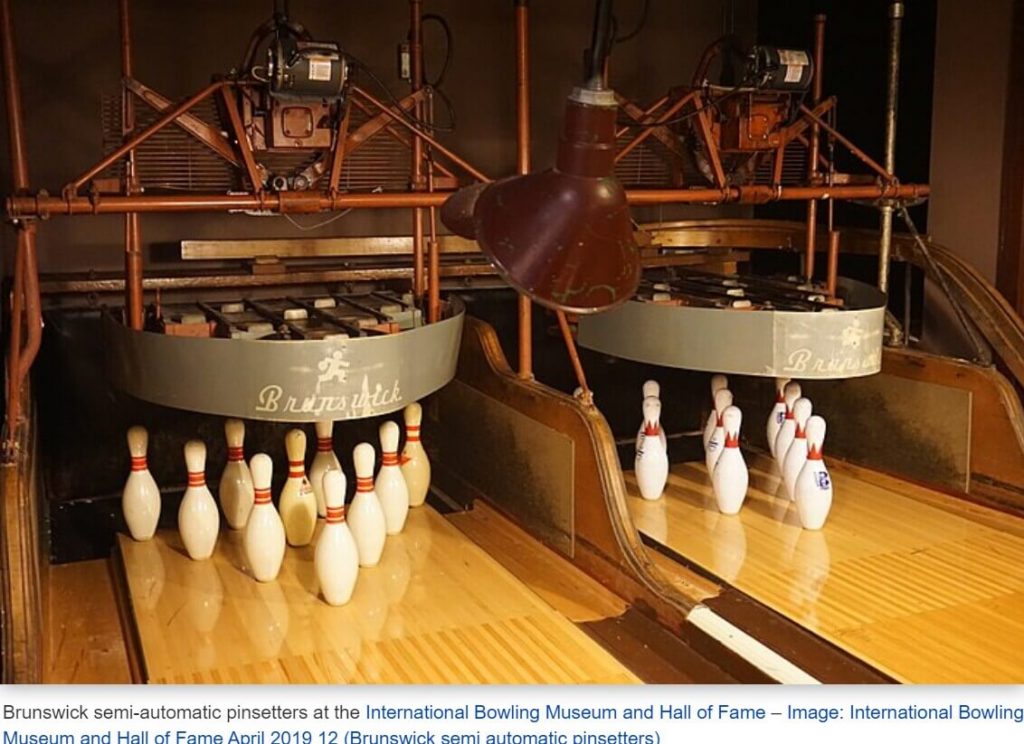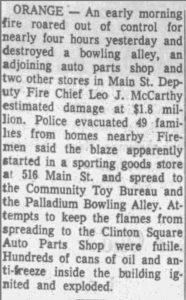
Another teenage job; see Working papers for more.
Setting up bowling pins paid pretty well, and I liked the predictability and orderliness of it. The customers were always 60 feet away, so they didn’t have to be dealt with, beyond making sure they got their ball back and didn’t throw a second one while I was still in the pit. Similar to my “cellar man” supermarket job later on, I could be alone with my thoughts and operate on autopilot.
In the 1950s, the Palladium in Orange had 24 lanes of modern semi-automatic pin setting machines, and eight older lanes where pins had to be set by hand. New hires were put in charge of a pair of the older, “peg” lanes, so called because each had a foot pedal to raise a set of steel pegs onto which the pins were placed. When the pedal was released, the pins stood perfectly aligned. The invention of the pegs eliminated the problem of mis-placed, or “mis-spotted” pins, and put an end to the most common bowler complaint about pinboys.
If you were a hard, fast worker, showed up for work on time and got along with management, you’d probably get promoted to the machines after two or three months. You may ask, how fast is “fast”? Truly fast pin cleanup and resetting looks something like a NASCAR tire change.

Note exposed steel peg, speed blur
The original Palladium had only the eight peg lanes; the machine lanes were added later. The peg side of the house was almost a separate room; when people came in to bowl, the desk manager assigned families with small children and anyone who looked like a troublemaker to a lane on the peg side.
The machines were only semi-automatic: you still had to toss a replacement pin into the slot for each one that got knocked down. The best feature of the machines was that they, not you, picked up the ball and got it started on its way back to the bowler. While I was working on the peg side, someone said I must get mad when a bowler throws a strike; I said no, because then I only have to pick up the ball once.
“The job was pretty much an OSHA nightmare. Pins often went flying, their wild arc broken by my feet or shins. Sometimes a pin came out of the pinsetter wobbly, and tipped over, so that I’d have to wriggle out onto the lane headfirst on my stomach after it, praying that the bowlers saw me.” – “Strikes, Spares and Bruised Shins”, Steven Kurutz, New York Times

Pinboys got 12 of the 50 cents bowlers paid for each game. This was decent money, and some “pinboys” were grownups supporting a family. About half were grown men, the rest were teenagers like me.
The air was smoky and the general atmosphere a bit seedy. Pin-setting work seemed to draw a lot of alcoholics. One of them was quite open about only wanting to earn enough to pay for his room and get a couple of bottles. Once he had enough, he’d go missing for a while.
Another pin setter carried a briefcase and wore a business suit to work every day. After he’d made his way down to the pits, he’d hang the suit up behind him and put on his coveralls. His wife probably knew what he did for a living, but his neighbors certainly didn’t.
Joe Pappas, who I think had Down syndrome, never got promoted to the machines. He was kept on the peg side, where the action was slower. Joe got paid 12 cents a game, the same as the rest of us.
Seedy or not, I never felt uncomfortable or unsafe there, except when I walked home late at night past Saint John’s cemetery and floating Jesus.
Automation today
Improvements in the machinery have made pinboys obsolete. The lanes now have automatic score sensing and tracking; bowlers no longer have to add up their score frame-by-frame across a paper form. If you can’t tell how many pins just got knocked down (the answer is ten minus the number still standing), or if you can’t clearly understand what just happened 60 feet in front of you, or if you can’t add a 1- or 2-digit number to a 2-or-3-digit number correctly and consistently, modern bowling technology has your solution.
A sad ending

